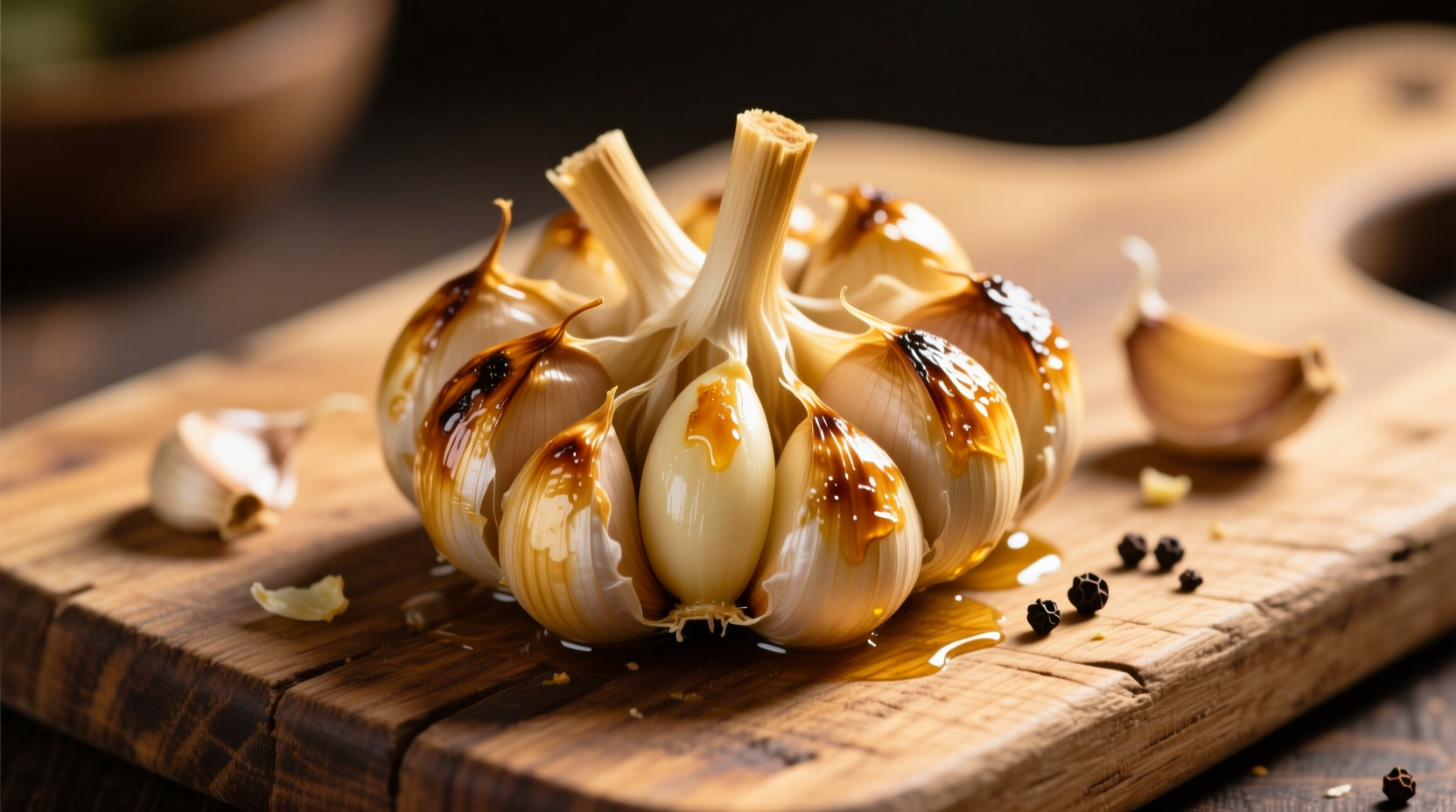The Magic of Roasted Garlic: From Sharp to Silky Smooth
When raw garlic hits the oven's gentle heat, something remarkable happens. Those sharp, pungent cloves undergo a complete flavor transformation, emerging soft, sweet, and spreadable. This kitchen alchemy turns garlic from a background player into a star ingredient that adds depth to everything from mashed potatoes to salad dressings. Professional chefs have relied on this technique for centuries, and now you can master it in your own kitchen with just three basic ingredients.
Why This Method Works Every Time
Unlike boiling or microwaving, slow roasting preserves garlic's natural sugars while breaking down harsh compounds. The USDA's Food Safety and Inspection Service confirms that roasting garlic at temperatures between 350°F-400°F (175°C-205°C) for 45-60 minutes effectively transforms its chemical composition without burning, creating that signature sweet, nutty flavor profile while maintaining food safety standards.
What You'll Need: Simple Ingredients, Professional Results
Gather these essentials before starting your roasting journey:
- Fresh garlic heads: Look for firm bulbs with tight skins (avoid any with green sprouts)
- High-quality olive oil: Extra virgin works best for flavor infusion
- Fine sea salt: For seasoning and moisture control
- Aluminum foil: Creates the perfect steam environment
- Small baking dish: Just large enough to hold your garlic heads
| Garlic Selection Guide | What to Look For | What to Avoid |
|---|---|---|
| Freshness | Firm bulbs, tight skins | Soft spots, loose cloves |
| Size | Medium to large heads | Excessively small cloves |
| Condition | No green sprouts | Visible mold or discoloration |
Step-by-Step Roasting Process
Preparation: Setting Up for Success
Start by preheating your oven to 400°F (205°C). Using a sharp knife, slice about ¼ inch off the top of each garlic head to expose the cloves. This crucial step allows heat and oil to penetrate evenly. Place each prepared head in foil with the cut side up, then drizzle 1-2 teaspoons of olive oil over the exposed cloves, making sure oil seeps between cloves. Sprinkle with a pinch of salt.
The Roasting Phase: Patience Pays Off
Fold the foil around each head to create a sealed packet, then place them in a small baking dish. Roast for 45-60 minutes - the exact time depends on garlic size. Check for doneness by gently squeezing a clove through the skin; it should feel completely soft and yield easily. Properly roasted garlic will turn golden brown, not blackened. The FDA recommends storing roasted garlic within two hours of cooking to maintain food safety.

Pro Tips from Professional Kitchens
As someone who's worked in Michelin-starred restaurants, I've learned these game-changing techniques:
- Temperature control: For deeper flavor without burning, try 350°F (175°C) for 60-75 minutes
- Oil infusion: Add fresh rosemary or thyme sprigs to the foil packet for aromatic complexity
- Storage secret: Keep roasted garlic submerged in olive oil in an airtight container for up to 10 days
- Freezing method: Squeeze soft cloves into ice cube trays, cover with oil, and freeze for long-term storage
Culinary Applications: Beyond the Basics
Don't limit roasted garlic to just spreading on bread. This versatile ingredient shines in numerous applications:
- Mix into mashed potatoes or roasted vegetables for subtle depth
- Blend with tahini and lemon for an exceptional dip
- Stir into vinaigrettes for complex salad dressings
- Add whole cloves to soups and stews during the last 15 minutes of cooking
- Combine with softened butter for compound butter perfection
Nutritionally, roasting changes garlic's profile significantly. According to USDA FoodData Central, while raw garlic contains allicin (its primary active compound), roasting creates new beneficial compounds like S-allyl cysteine that enhance absorption of garlic's health-promoting properties.
Troubleshooting Common Issues
- Bitter garlic: Usually caused by over-roasting - reduce time by 10-15 minutes next time
- Too moist: Unwrap foil for final 10 minutes of roasting to allow excess moisture to evaporate
- Uneven cooking: Ensure cloves are evenly exposed and oil penetrates between all cloves
- Strong flavor remaining: Try roasting at lower temperature (350°F) for longer duration (75 minutes)
Historical Context: A Technique Through the Ages
Roasting garlic isn't just a modern cooking hack - it's a technique with deep historical roots. Culinary historians at the Oxford Symposium on Food and Cookery have documented roasted garlic preparations dating back to ancient Roman times, where it was considered both a culinary staple and medicinal remedy. This slow transformation method has endured because it reliably solves garlic's primary cooking challenge: how to enjoy its complex flavor without overwhelming heat.
Ready to Transform Your Cooking?
With just one hour of mostly hands-off time, you've created a flavor powerhouse that elevates everything it touches. The beauty of roasted garlic lies in its simplicity - no special equipment, no complicated techniques, just heat transforming a humble ingredient into something extraordinary. Keep a batch in your refrigerator and watch how it effortlessly elevates your everyday cooking from ordinary to exceptional.











 浙公网安备
33010002000092号
浙公网安备
33010002000092号 浙B2-20120091-4
浙B2-20120091-4